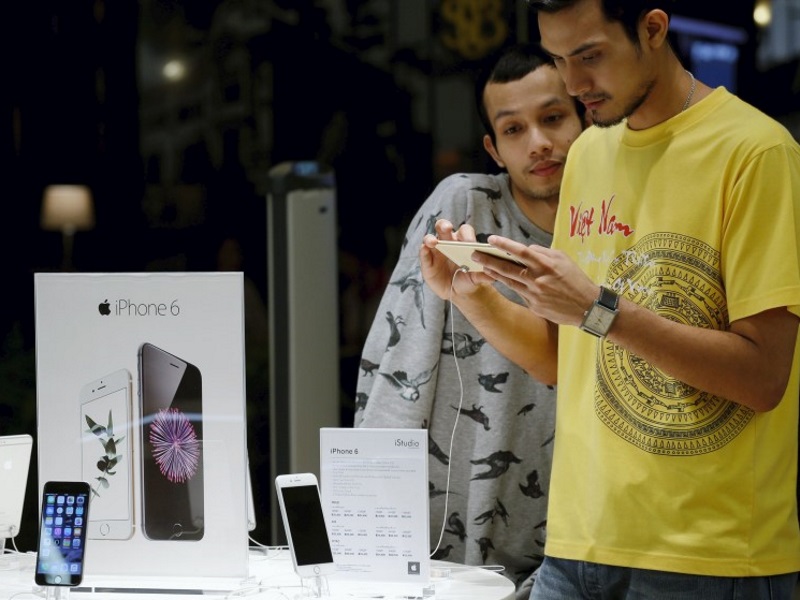- Home
- Mobiles
- Mobiles News
- Apple Loses Patent Lawsuit to University of Wisconsin, Faces Hefty Damages
Apple Loses Patent Lawsuit to University of Wisconsin, Faces Hefty Damages

The jury in Madison, Wisconsin also said the patent, which improves processor efficiency, was valid. The trial will now move on to determine how much Apple owes in damages.
Representatives for the Wisconsin Alumni Research Foundation (WARF) and Apple could not immediately be reached for comment.
WARF sued Apple in January 2014 alleging infringement of its 1998 patent for improving chip efficiency.
The jury was considering whether Apple's A7, A8 and A8X processors, found in the iPhone 5s, iPhone 6 and iPhone 6 Plus, as well as several versions of the iPad, violate the patent.
Cupertino, California-based Apple denied any infringement and argued the patent is invalid, according to court papers. Apple previously tried to convince the US Patent and Trademark Office to review the patent's validity, but in April the agency rejected the bid.
According to a recent ruling by US District Judge William Conley, who is presiding over the case, Apple could be liable for up to $862.4 million (roughly Rs. 5,614 crores) in damages.
He scheduled the trial to proceed in three phases: liability, damages, and finally, whether Apple infringed the patent willfully, which could lead to enhanced penalties.
WARF used the patent to sue Intel Corp in 2008, but the case was settled the following year on the eve of trial.
Last month, WARF launched a second lawsuit against Apple, this time targeting the company's newest chips, the A9 and A9X, used in the just-released iPhone 6s and 6s Plus, as well as the iPad Pro.
The case is Wisconsin Alumni Research Foundation v. Apple Inc in the US District Court for the Western District of Wisconsin, No. 14-cv-62.
© Thomson Reuters 2015
Catch the latest from the Consumer Electronics Show on Gadgets 360, at our CES 2026 hub.
Related Stories
- Samsung Galaxy Unpacked 2025
- ChatGPT
- Redmi Note 14 Pro+
- iPhone 16
- Apple Vision Pro
- Oneplus 12
- OnePlus Nord CE 3 Lite 5G
- iPhone 13
- Xiaomi 14 Pro
- Oppo Find N3
- Tecno Spark Go (2023)
- Realme V30
- Best Phones Under 25000
- Samsung Galaxy S24 Series
- Cryptocurrency
- iQoo 12
- Samsung Galaxy S24 Ultra
- Giottus
- Samsung Galaxy Z Flip 5
- Apple 'Scary Fast'
- Housefull 5
- GoPro Hero 12 Black Review
- Invincible Season 2
- JioGlass
- HD Ready TV
- Laptop Under 50000
- Smartwatch Under 10000
- Latest Mobile Phones
- Compare Phones
- OPPO Reno 15 Pro Max
- Honor Win RT
- Honor Win
- Xiaomi 17 Ultra Leica Edition
- Xiaomi 17 Ultra
- Huawei Nova 15
- Huawei Nova 15 Pro
- Huawei Nova 15 Ultra
- Asus ProArt P16
- MacBook Pro 14-inch (M5, 2025)
- OPPO Pad Air 5
- Huawei MatePad 11.5 (2026)
- Xiaomi Watch 5
- Huawei Watch 10th Anniversary Edition
- Acerpure Nitro Z Series 100-inch QLED TV
- Samsung 43 Inch LED Ultra HD (4K) Smart TV (UA43UE81AFULXL)
- Asus ROG Ally
- Nintendo Switch Lite
- Haier 1.6 Ton 5 Star Inverter Split AC (HSU19G-MZAID5BN-INV)
- Haier 1.6 Ton 5 Star Inverter Split AC (HSU19G-MZAIM5BN-INV)

















